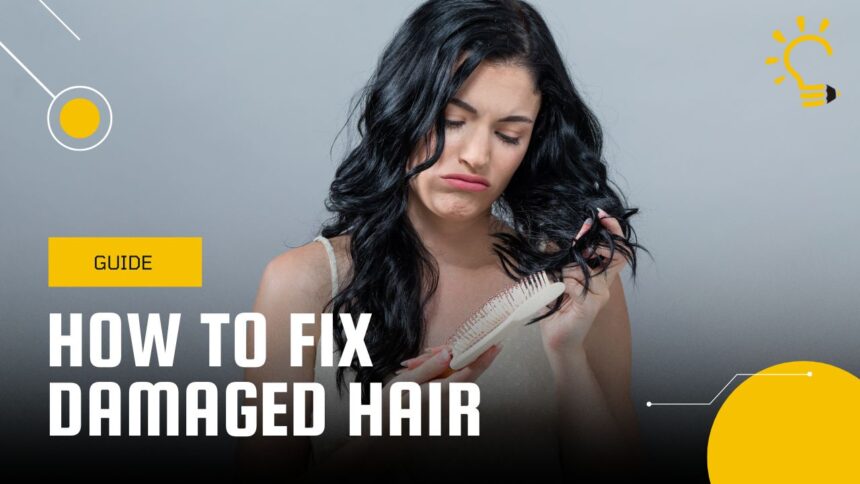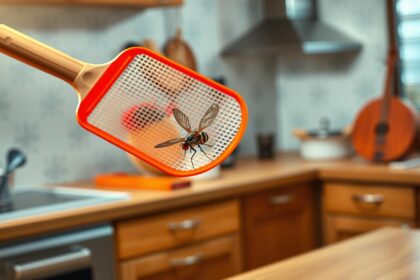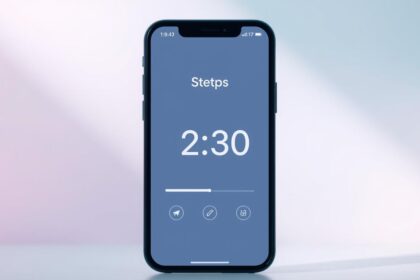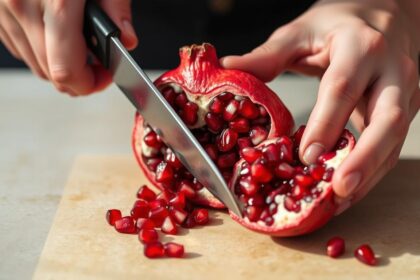If you’ve ever wondered how to restore your hair’s health without opting for a drastic cut, you’re not alone. Many individuals seek natural solutions to repair damaged hair caused by heat styling, chemical treatments, chlorine exposure, and daily wear and tear. The good news is that with the right care and attention, you can rejuvenate your hair and bring it back to life. In this article, we’ll guide you through effective natural treatments to fix damaged hair and maintain its health, allowing you to enjoy vibrant and luscious locks without resorting to extreme measures.
Understanding the Causes of Hair Damage
Before diving into treatments, it’s crucial to understand what causes hair damage. Hair can become damaged due to several factors, which can be mitigated with preventative measures.
Heat Styling
Frequent use of flat irons, curling wands, and blow dryers can weaken hair strands and lead to breakage. The intense heat from these tools strips the hair of its natural moisture, leaving it dry and prone to damage. To prevent this, try to limit the frequency of heat styling and always use a heat protectant spray. Additionally, consider embracing your natural hair texture and experimenting with heatless styling methods.
Chemical Treatments
Coloring, perming, or relaxing hair strips away its natural moisture, leading to brittle and dry strands. These treatments often alter the hair’s structure, making it more susceptible to damage and breakage. If you choose to chemically treat your hair, ensure you follow up with intensive conditioning treatments to replenish lost moisture. Consider consulting with a professional stylist who can provide guidance on less damaging alternatives.
Chlorine Exposure
Swimming in chlorinated pools can leave hair feeling rough and damaged. Chlorine strips the hair of its protective oils, leading to dryness and brittleness. To combat this, wet your hair with fresh water before swimming, as this reduces chlorine absorption. After swimming, rinse your hair thoroughly and apply a deep conditioner to restore moisture. Wearing a swim cap can also provide an extra layer of protection.
Environmental Factors
Sun exposure, pollution, and harsh weather conditions can also contribute to hair damage. UV rays from the sun can cause hair color to fade and weaken the hair shaft. Similarly, pollution can lead to buildup on the scalp and hair, affecting its health. Protect your hair by wearing a hat or scarf when outdoors, and incorporate products with UV protection into your hair care routine. Regularly cleanse your hair to remove environmental impurities and maintain its vitality.
Recognizing these causes helps you take preventive measures in the future while repairing existing damage. Understanding your hair’s vulnerabilities allows you to make informed decisions about how to care for it effectively.
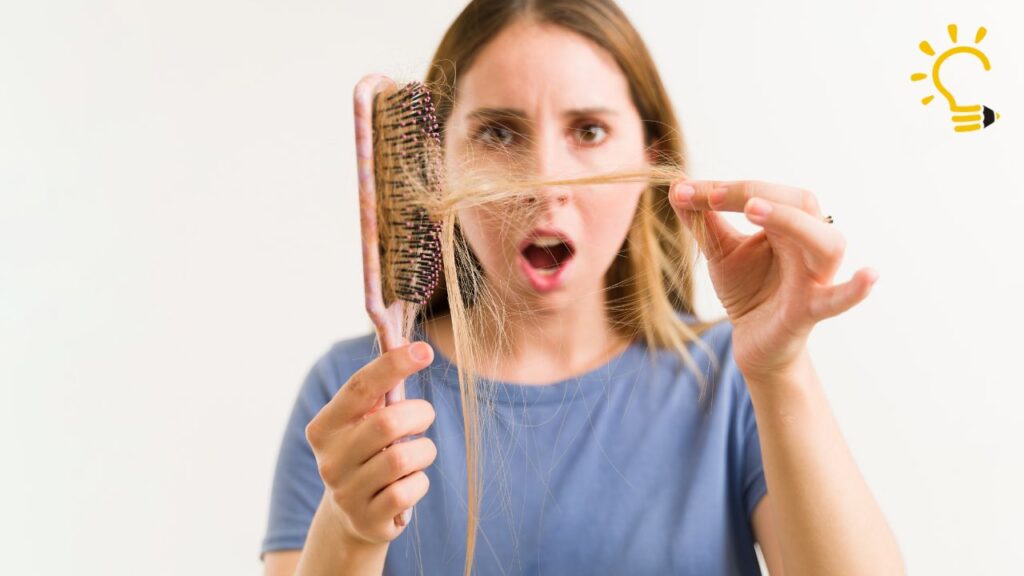
Fixing Split Ends
Split ends are a common issue for many, but there’s no need to reach for the scissors immediately. Here are some natural ways to fix split ends and keep your hair looking healthy.
Regular Trimming
While you may not want to cut your hair, trimming the very ends every six to eight weeks prevents splits from traveling up the hair shaft. Regular trims help maintain the overall health of your hair by removing damaged ends. A professional stylist can help you maintain your desired length while keeping your hair in optimal condition. Consider incorporating this practice into your routine to prevent further damage.
Deep Conditioning Treatments
Use a natural deep conditioner once a week. Ingredients like avocado, honey, and olive oil are excellent for moisturizing and repairing split ends. These natural ingredients penetrate the hair shaft, providing essential nutrients and hydration. You can create your own DIY deep conditioning mask at home or purchase a product with these enriching ingredients. Consistent use will significantly improve the texture and appearance of your hair.
Avoiding Heat
Limit the use of heat styling tools. When necessary, use a heat protectant spray to shield your hair from damage. Embrace air-drying methods or low-heat styling options to prevent further stress on your hair. If you must use heat, opt for tools with temperature controls to minimize exposure. Over time, reducing heat usage will result in healthier, more resilient hair.
Repairing Chemically Damaged Hair
Chemically treated hair often requires extra care to regain its health. Here’s how you can nurture your locks back to life with natural remedies.
Hydrating Hair Masks
Opt for a weekly hydrating mask using natural ingredients like coconut oil or aloe vera. These masks restore moisture and repair damage from the inside out. Coconut oil is renowned for its ability to penetrate the hair shaft, providing deep hydration and strengthening the hair. Aloe vera soothes the scalp and helps repair damaged hair cuticles. Apply the mask generously, leave it on for at least 30 minutes, and rinse thoroughly for best results.
Protein Treatments
Protein treatments help rebuild the hair structure. Look for natural protein masks or treatments that fortify and strengthen your hair. These treatments replenish lost protein, essential for maintaining hair integrity and preventing breakage. You can find protein treatments in stores or create your own using ingredients like egg, yogurt, or gelatin. Incorporate these treatments into your routine every few weeks to restore strength and elasticity.

Minimizing Chemical Exposure
Try to extend the time between chemical treatments. This gives your hair a break and allows it to recover. Consider transitioning to less damaging options, such as semi-permanent hair color or natural hair dye alternatives. Discuss with your stylist about the best approach for your hair type and condition. Giving your hair time to recuperate will lead to healthier and more resilient strands.
How to Fix Chlorine Damaged Hair
Chlorine can strip hair of its natural oils, leaving it dry and brittle. Here’s how to combat chlorine damage effectively.
Rinse Before and After Swimming
Wet your hair with fresh water before diving into a pool. This reduces the amount of chlorine your hair absorbs. The cuticle swells with fresh water, minimizing chlorine penetration. After swimming, rinse your hair immediately to remove any chlorine residue and prevent buildup. Follow up with a moisturizing conditioner to replenish lost oils and restore softness.
Use a Swim Cap
Consider wearing a swim cap to protect your hair from chlorinated water. Swim caps provide a physical barrier, reducing chlorine exposure and protecting your hair’s integrity. While not completely waterproof, they significantly minimize contact with chlorinated water. Invest in a high-quality swim cap for better protection and comfort during your swim sessions.
Clarifying Shampoo
Once a week, use a clarifying shampoo to remove chlorine buildup. Follow with a deep conditioner to replenish moisture. Clarifying shampoos effectively cleanse the hair and scalp, eliminating chlorine residues and impurities. Be cautious not to overuse clarifying shampoos, as they can strip natural oils. Combine this with a nourishing conditioner to maintain a healthy moisture balance.
How to Fix Heat Damaged Hair
Heat styling can leave hair feeling parched and fragile. Here are some tips for restoring heat-damaged hair naturally.
Air Dry Whenever Possible
Let your hair air dry naturally instead of using a blow dryer. If you must use heat, set tools to a lower temperature. Air drying reduces heat exposure, allowing your hair to retain its natural moisture. Consider using a microfiber towel or an old T-shirt to gently remove excess water without causing friction. Embrace your natural texture and experiment with air-dry styling techniques.
Leave-In Conditioners
Apply a leave-in conditioner to your hair daily. This adds moisture and protects against further damage. Leave-in conditioners provide continuous hydration and create a protective barrier against environmental stressors. Choose a product suited to your hair type and needs, and apply it to damp hair for best results. Regular use will leave your hair feeling soft, manageable, and healthy.
Regular Oil Treatments
Treat your hair to regular oil treatments using natural oils like argan, jojoba, or almond oil. These oils nourish and repair the hair shaft. Oils penetrate deeply into the hair, providing essential fatty acids and vitamins that strengthen and revitalize your hair. Apply the oil from mid-length to ends, leave it on for at least an hour, and wash it out thoroughly. Incorporate this into your routine once or twice a week for optimal results.
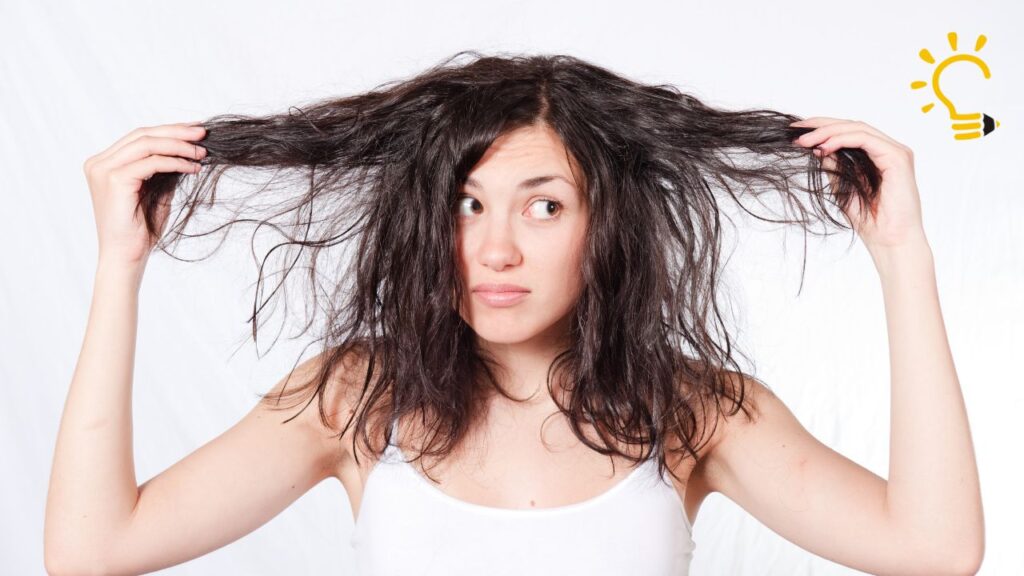
Repairing Damaged Hair Without Cutting It
If you’re not ready to part with your length, you can still repair your hair naturally without resorting to scissors.
Gentle Detangling
Use a wide-toothed comb and start detangling from the ends up to minimize breakage. Avoid brushing wet hair, as it’s more prone to damage. Wet hair is more elastic and susceptible to breakage, so handle it with care. A detangling spray can assist in reducing friction and making the process smoother. Patience and gentle handling are key to preventing further damage while maintaining length.
Silk Pillowcases
Switch to silk pillowcases to reduce friction while sleeping. This helps prevent tangles and breakage. Silk’s smooth surface allows your hair to glide effortlessly, minimizing friction and static. It also retains moisture, preventing hair from drying out overnight. Consider investing in a silk pillowcase as part of your overall hair care routine for healthier, more manageable hair.
Balanced Diet
A healthy diet rich in vitamins and minerals supports hair health. Incorporate foods high in omega-3 fatty acids, like fish and nuts, to promote strong hair. Vitamins A, C, D, and E, along with zinc and iron, play crucial roles in maintaining hair health. Ensure your diet is balanced and includes a variety of nutrients to support hair growth and prevent damage. Consider supplements if necessary, but consult with a healthcare professional before starting any new regimen.
Conclusion
Repairing damaged hair naturally takes time and patience, but the results are worth it. By understanding the causes of damage and applying the right treatments, you can restore your hair’s strength and shine. Remember, consistent care and gentle handling are key to maintaining healthy, beautiful hair. Whether you’re dealing with split ends, chemical damage, or chlorine exposure, these natural treatments will help you achieve the luscious locks you desire.
Incorporate these tips into your hair care routine, and watch as your hair transforms from damaged to dazzling. With dedication and the right approach, you can enjoy healthy, vibrant hair without resorting to scissors. A combination of preventive measures, nourishing treatments, and lifestyle changes will lead to long-lasting results, allowing you to embrace your hair’s natural beauty confidently.
Got A Hole In A Wall Check Out This To Fix It.


